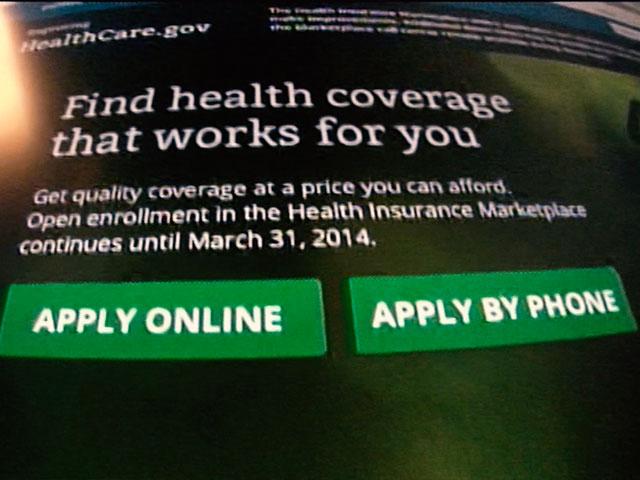Healthcare Open Enrollment

The Open Enrollment Period (OEP) for Healthcare and Open Enrollment for Medicare alert insureds that it’s time to review current health insurance or enroll in a new health insurance plan.
Open Enrollment – Healthcare.gov
The Open Enrollment Period for 2018 started on November 1, 2017 and ends December 15, 2017.
After the Open Enrollment Period ends for Healthcare.gov, you might have the option to enroll in Obamacare health insurance if you’re qualified for a Special Enrollment Period. (SEP) Specific life events, e.g. losing other health coverage, marriage, or adding a family member by birth or adoption may qualify. If you have an important life change, use the screening tool to determine if you qualify for a SEP to get insurance coverage for the remainder of 2017: https://www.healthcare.gov/screener/
- If your event qualifies, it’s important to complete or update a health insurance application now. You’ll be advised when the health insurance coverage can begin.
- Check with an employer about job-based plans. These may have different OEPs.
- Use the Healthcare.gov Marketplace application to apply for and enroll in the Children’s Health Insurance Program (CHIP) or Medicaid at any time. There’s no specific Open Enrollment Period for these programs. If you qualify, Healthcare.gov will notify your state Medicaid Office.
Fall Open Enrollment for Medicare
If you’re a Medicare beneficiary, you may change Medicare coverage during the Fall Open Enrollment Period (October 15, 2017 — December 7, 2017). During Fall Open Enrollment:
- You can join a new Medicare Advantage Plan or elect a new Prescription Drug Plan (PDP) under Medicare Part D.
- You can switch from a Medicare Advantage Plan to Original Medicare: it’s your choice to add a PDP or not.
Here are several things to consider as you decide Medicare coverage during Fall Open Enrollment this year:
#1: New coverage starts January 1, 2017 if you select a new plan during Medicare Fall Open Enrollment.
- For most people, the Fall Open Enrollment Period is the only opportunity to select a new Part D or Medicare Advantage plan (Medicare Part C).
#2: Medicare Advantage plans aren’t the best choice for everyone. It’s possible to switch back to Original Medicare during Fall Open Enrollment. Because prescription drug coverage is included in a Medicare Advantage Plan, you must add a stand-alone prescription medicine plan in that case. A Medigap, or Medicare supplement policy, may help to pay for costs associated with Original Medicare (which pays about 80 percent of covered expenses), but the beneficiary may be limited in his or her ability to purchase a supplement plan during the Open Enrollment Period. (Note: Disabled people receiving Social Security Disability and Medicare may have received “Extra Help,” in which case they may choose new plans at any time.)
#3. Review current Medicare drug and health insurance coverage. If you currently have Original Medicare, review the 2018 edition of “Medicare & You” to compare benefits and premium costs. If you don’t like your current Medicare coverage, make necessary changes during the Fall Open Enrollment Period. Any changes take effect January 1, 2018.
- If you currently have a stand-alone Medicare Part D plan or a Medicare Advantage Plan (Medicare Part C), you will receive an Evidence of Coverage (EOC) and/or the Annual Notice of Change (ANOC) from the plan. Read these notices to compare costs, rules, and benefits. If you don’t like these proposed changes, elect new coverage during the Fall Open Enrollment Period.
- If you’re happy with current coverage, it’s still a good idea to review and compare new options that may be a better fit for your needs. For instance, if you like your Medicare Advantage plan or drug plan, check competitive pricing. You might find the same or better coverage at a reduced rate. CMS research reports that Part D beneficiaries can lower premium costs by comparing plans during Open Enrollment.
#4. Bring your questions to Medicare. Use the Plan Finder Tool at Medicare.gov to compare plans. Input the medicines you need, your pharmacy, and your current costs to compare.
- If you’d like to enroll in a Medicare Advantage Plan (Medicare Part C), call the Medicare Help Line at 1-800-MEDICARE to discuss the available plans in your area. After you learn the plans, do some research. Visit their websites to compare costs and benefits to you.
- Call the plan to ask questions or confirm your findings. Ensure that the plan allows you to continue to see your doctors and that your hospital is on the network. Learn if the plan covers your medications and your preferred pharmacies in its network. Make notes during the conversation, including the date, the representative with whom you spoke, and your decision for your file.
- Call your state’s Health Insurance Assistance Program (SHIP). They can help you to compare your coverage options.
- Take your decision to the next level by calling 1-800-MEDICARE to enroll.
#5. Disenroll from a Medicare Advantage Plan during Medicare Advantage Disenrollment Period (MADP) – January 1 – February 14, 2018.
Know the Differences between Medicare Fall Open Enrollment and the Health Insurance Marketplaces’ Open Enrollment
Healthcare.gov offers annual open enrollment for underinsured or uninsured people in the U.S. The Obamacare enrollment period overlaps somewhat with Medicare Fall Open Enrollment:
- The Healthcare Marketplaces aren’t intended for Medicare-eligible people or current Medicare beneficiaries.
- If you’re a Medicare beneficiary or you’re Medicare-eligible, use the Fall Open Enrollment period – from October 15 to December 7, 2017 to make any changes to current Medicare benefits coverage.



